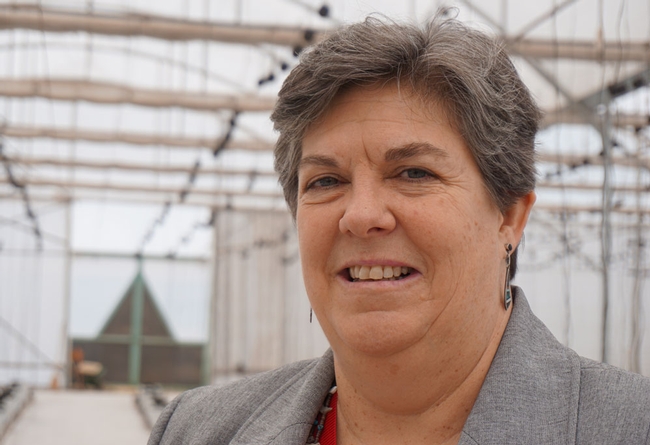
UC Vice President Glenda Humiston to testify before House Ag Committee June 22

Humiston is one of six higher education witnesses who will speak at the hearing, which is being held as Congress considers provisions of the 2018 Farm Bill.
The hearing takes place at the Longworth House office Building in Washington, D.C., and will be streamed live and recorded on YouTube.
In announcing the hearing, the chair of the House Committee on Agriculture, Michael Conaway of Texas, said ag research has been essential to U.S. gains in productivity over the past century.
"With the global population expected to reach 9.7 billion by 2050, U.S. production agriculture will continue to be asked to produce more with fewer resources and the best way to do that will be through strategic investments in agricultural research," Conaway said. "I look forward to hearing from university leaders about the opportunities and challenges they face in ensuring American agriculture remains a world leader in cutting-edge technology and research.”
Following are highlights from Humiston's prepared remarks:
- A recent study found the return on investment for federal funding of the public land-grant system averages 21:1, corresponding to annual rates of return between 9 percent and 10 percent.
- With the University of California (UC) Agriculture and Natural Resources (ANR) serving as a vital partner, California's $47 billion agricultural sector continues to make California the nation's top agricultural state.
- In the past fiscal year, UC ANR has served more than 1.4 million adults and youth directly, published about 1,800 peer-reviewed journal articles and filed more than 20 patents.
- Federal and state funds are leveraged to secure federal competitive grants, grants from private industry, and other gifts and awards for research at the nation's land-grant universities.
- Although progress is being made to incrementally increase appropriations to the USDA Agriculture and Food Research Initiative, it remains funded at considerably less than the $700 million authorized in the previous two Farm Bills.
Humiston will explain that universities are uniquely set up to allow collaboration among experts in different subjects to solve complex problems and she will give a few examples of multidisciplinary projects, including development of a product to improve the shelf-life of fresh produce and reduce food waste:
“James Rogers studied flexible solar cells at UC Santa Barbara and Lawrence Berkeley National Laboratory. A radio program on world hunger gave the materials scientist his “aha!” moment in 2012. His work on thin-film polymers from solar cells, coupled with information from UC Cooperative Extension, led to an invisible, edible and tasteless barrier that can protect food crops and dramatically improve longevity of produce freshness – using waste plant parts often left on the farm. Apeel Sciences now supports 71 employees and hits shelves this summer, when some of the world's largest avocado producers start using it.”
For a transcript of Humiston's full prepared remarks, see http://ucanr.edu/files/264186.pdf.
UC Agriculture and Natural Resources researchers and educators draw on local expertise to conduct agricultural, environmental, economic, youth development and nutrition research that helps California thrive. Learn more at ucanr.edu.
